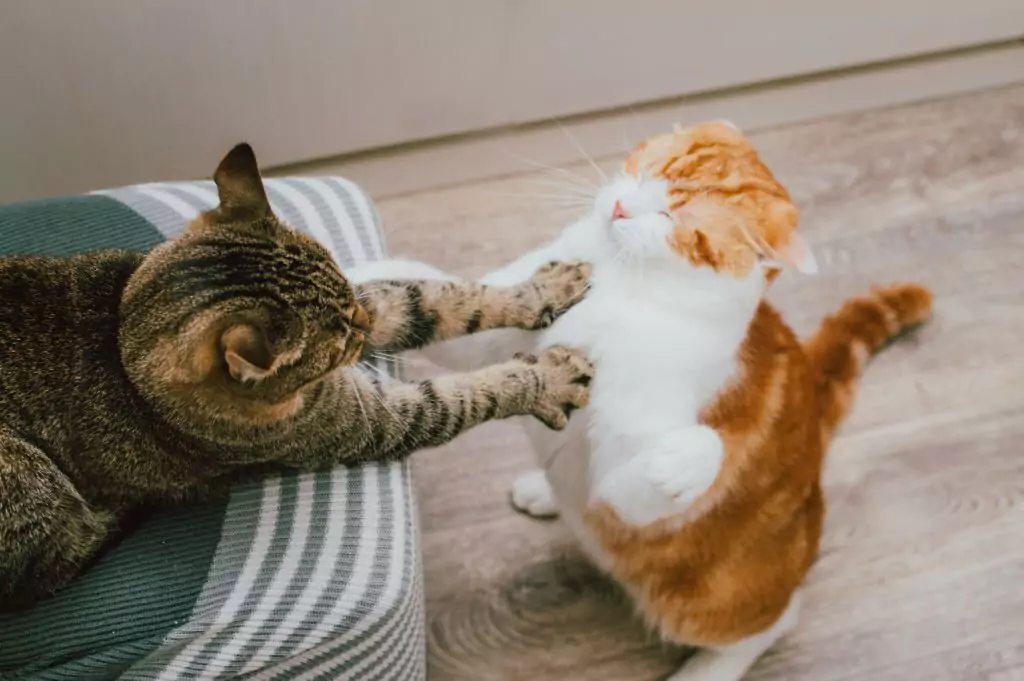Introduction
Cats are known for their independent and solitary nature, but they can also be prone to bullying behavior towards other cats in the household. This can create a negative dynamic and cause stress and anxiety for all cats involved. It is important to understand the root cause of cat bullying and implement strategies to create a safe and comfortable environment for all cats.

Understanding the root cause of cat bullying
There are several common reasons why cats bully each other. One of the most common reasons is territorial behavior. Cats are naturally territorial animals and may become aggressive towards other cats who they perceive as a threat to their territory. Fear and stress can also be contributing factors to bullying behavior. Cats who are stressed or anxious may lash out at other cats as a way to cope with their emotions.
Identifying signs of bullying behavior in cats
It is important to be able to identify signs of bullying behavior in cats. Common behaviors that indicate bullying include hissing, growling, and physical aggression such as biting and scratching. Cats may also exhibit avoidance behavior, such as hiding or refusing to come out of hiding spots.
Creating a safe and comfortable environment for all cats
Creating a peaceful environment is key to preventing cat bullying. Providing multiple litter boxes and hiding spots can help reduce competition and create a sense of security for all cats. It is also important to provide plenty of vertical space, such as cat trees and shelves, to allow cats to escape and avoid confrontations.
Implementing positive reinforcement training techniques
Positive reinforcement can be used to encourage good behavior and discourage bullying. Rewarding cats for good behavior, such as using the litter box and playing nicely with other cats, can help reinforce positive behavior. Punishing cats for bad behavior, such as physical aggression, is not recommended as it can increase stress and anxiety.
Separating cats during feeding and playtime
Feeding and playtime can be a source of competition and aggression between cats. It is important to separate cats during these activities to prevent confrontations. Providing separate feeding areas and toys can help reduce competition and create a more peaceful environment.
Introducing new toys and activities to reduce boredom and aggression
Boredom can be a contributing factor to bullying behavior. Providing new toys and activities can help reduce boredom and prevent bullying behavior. Interactive toys, such as puzzle feeders and laser pointers, can provide mental stimulation and reduce stress and anxiety.
Seeking professional help from a veterinarian or animal behaviorist
In some cases, it may be necessary to seek professional help from a veterinarian or animal behaviorist. They can help identify the root cause of bullying behavior and provide strategies to address the issue. This may include medication, behavior modification techniques, and environmental changes.
Monitoring progress and adjusting strategies as needed
It is important to monitor progress and make adjustments to strategies as needed. Not all strategies will work for every cat, and it may take time to find the right combination of strategies to address the issue. It is important to be patient and persistent in addressing cat bullying behavior.
Conclusion
Cat bullying can create a negative dynamic in the household and cause stress and anxiety for all cats involved. Understanding the root cause of bullying behavior and implementing strategies to create a safe and comfortable environment can help prevent bullying. Positive reinforcement training techniques, separating cats during feeding and playtime, introducing new toys and activities, and seeking professional help when needed are all strategies that can be used to address cat bullying behavior. By taking action to address cat bullying, we can create a more peaceful and harmonious household for all cats.

